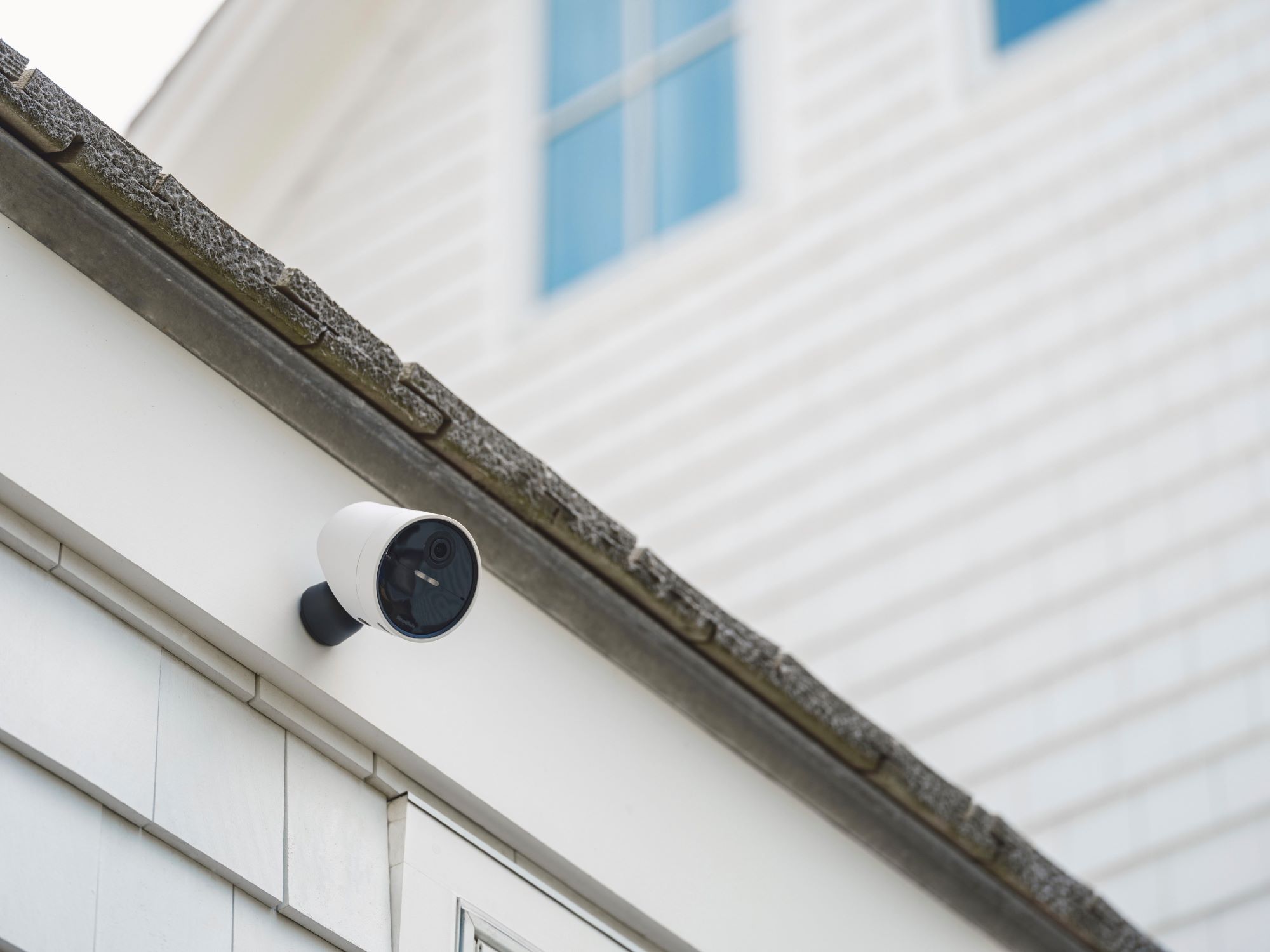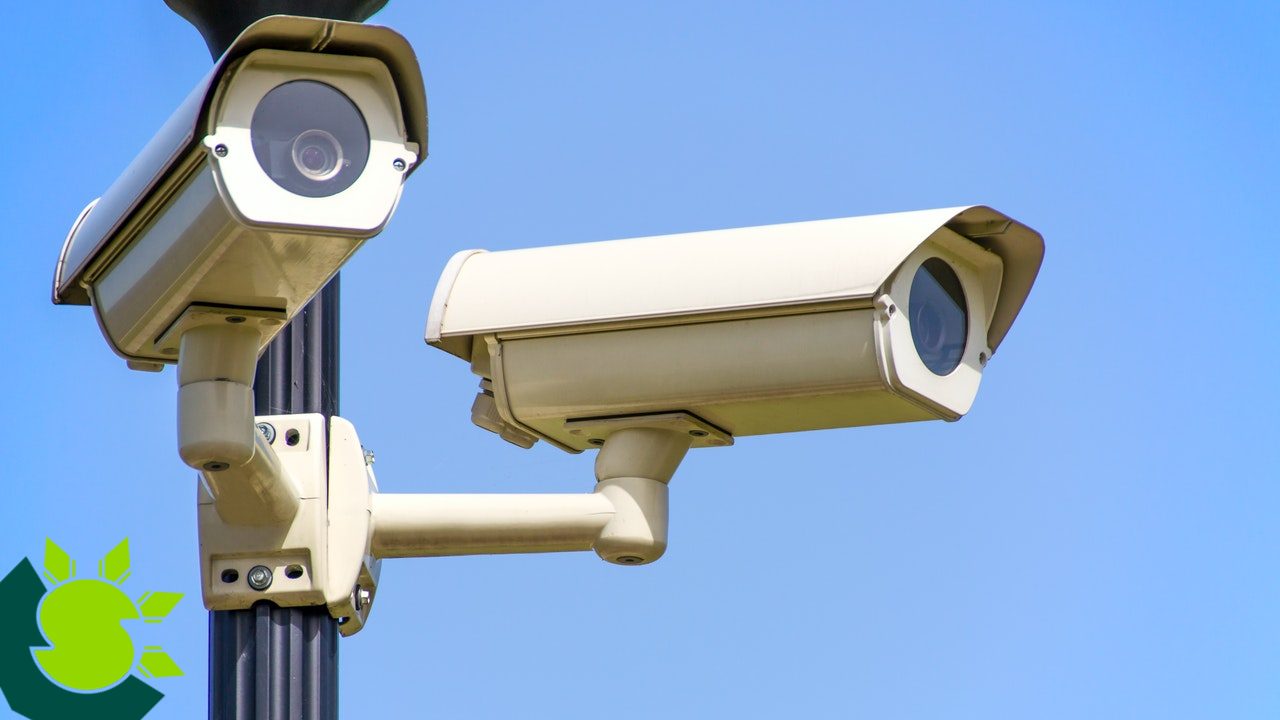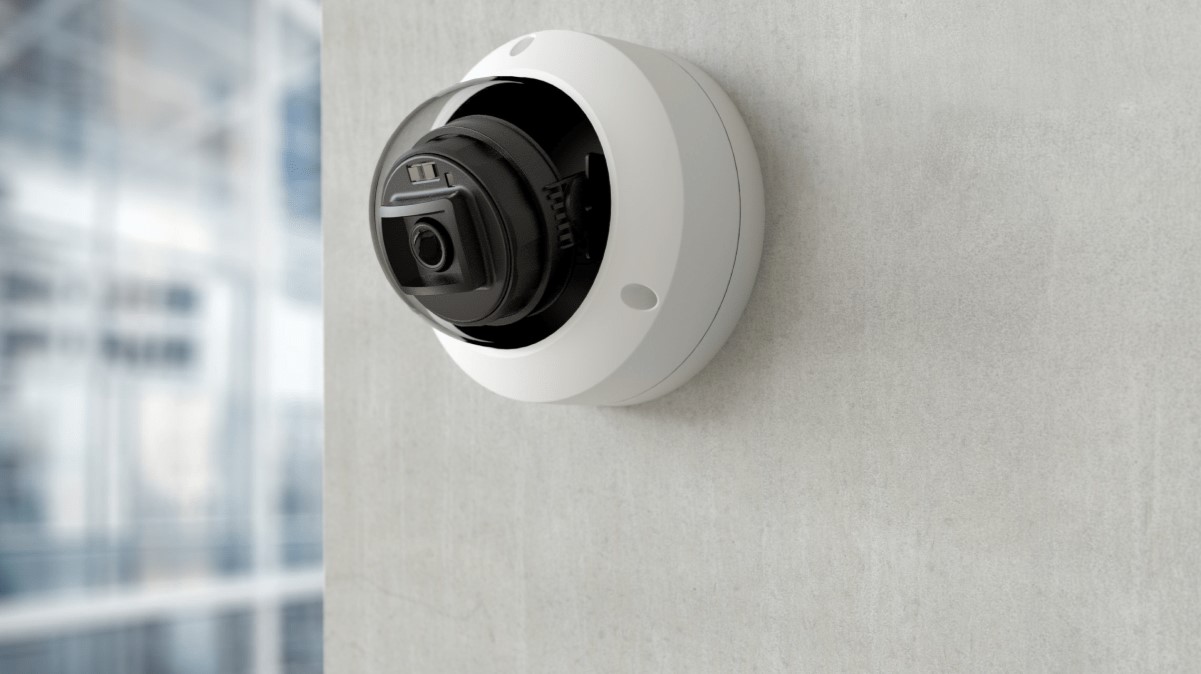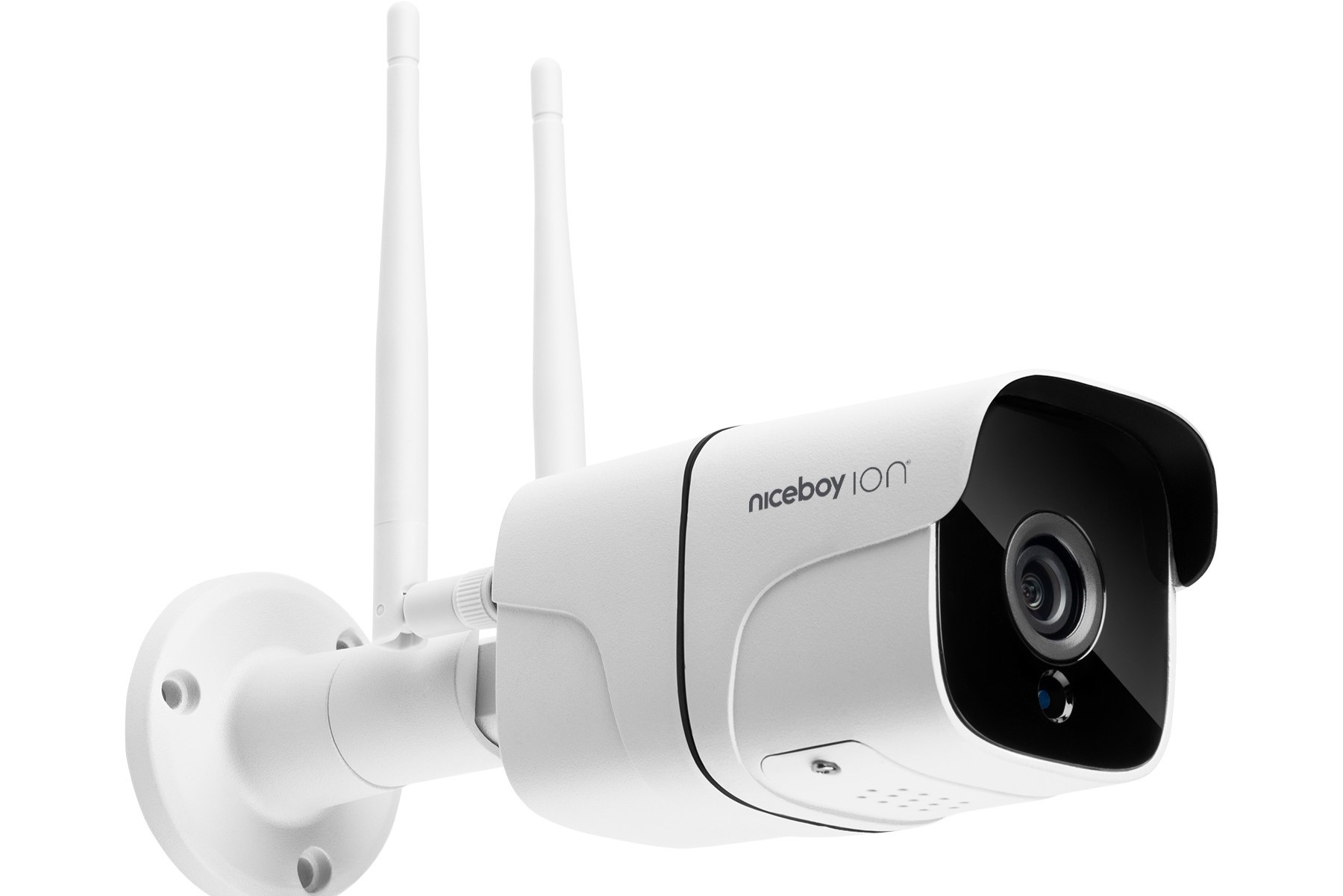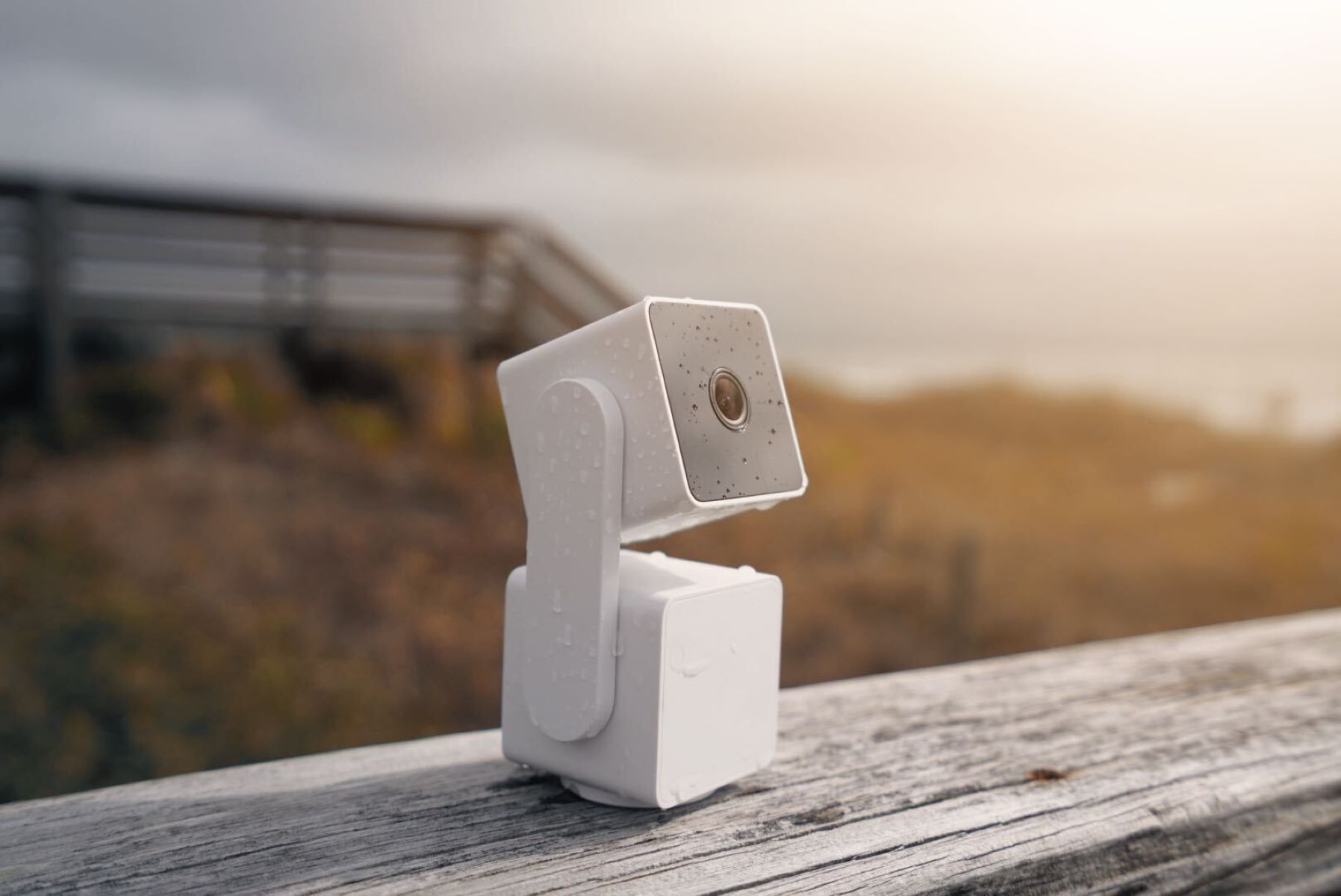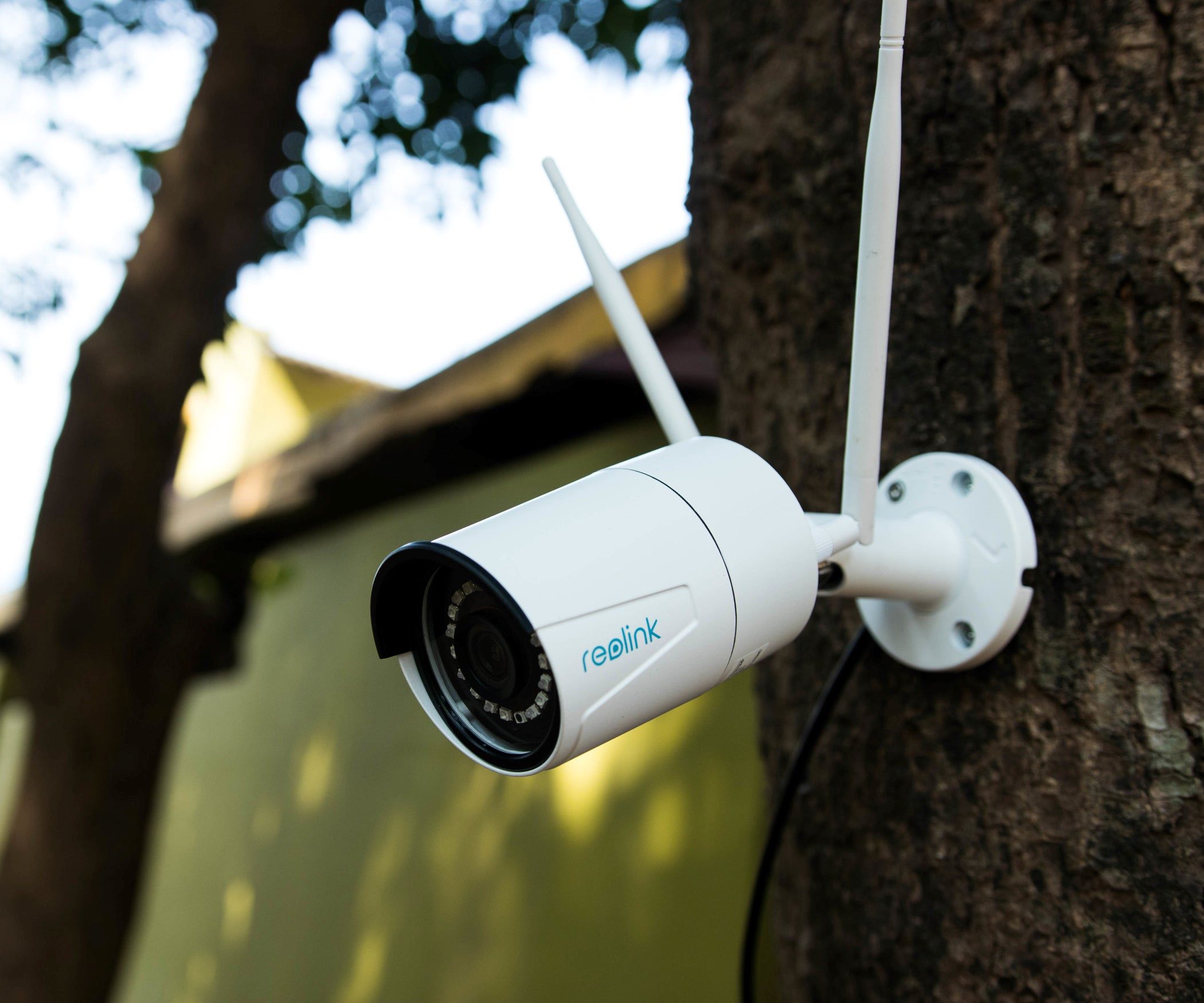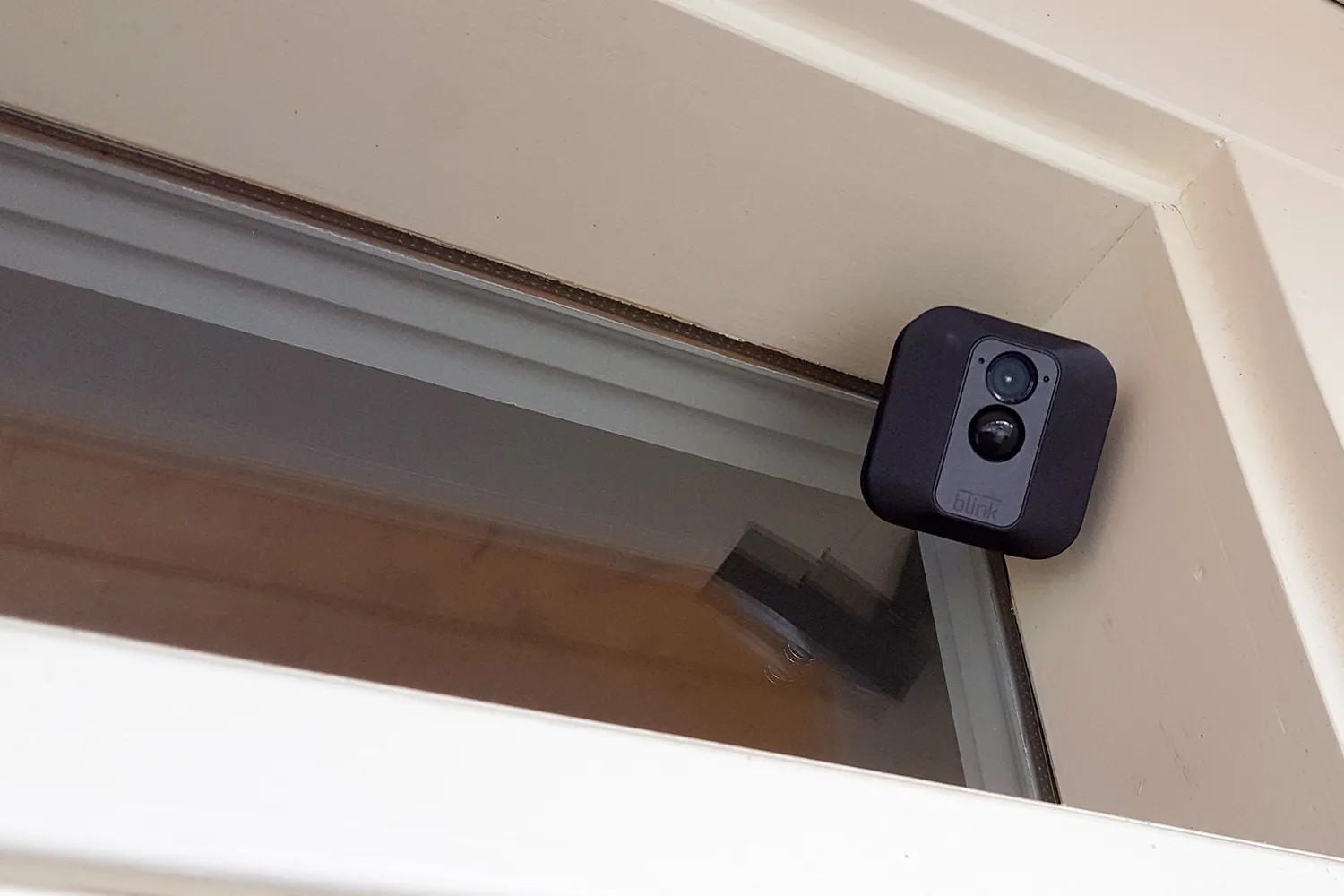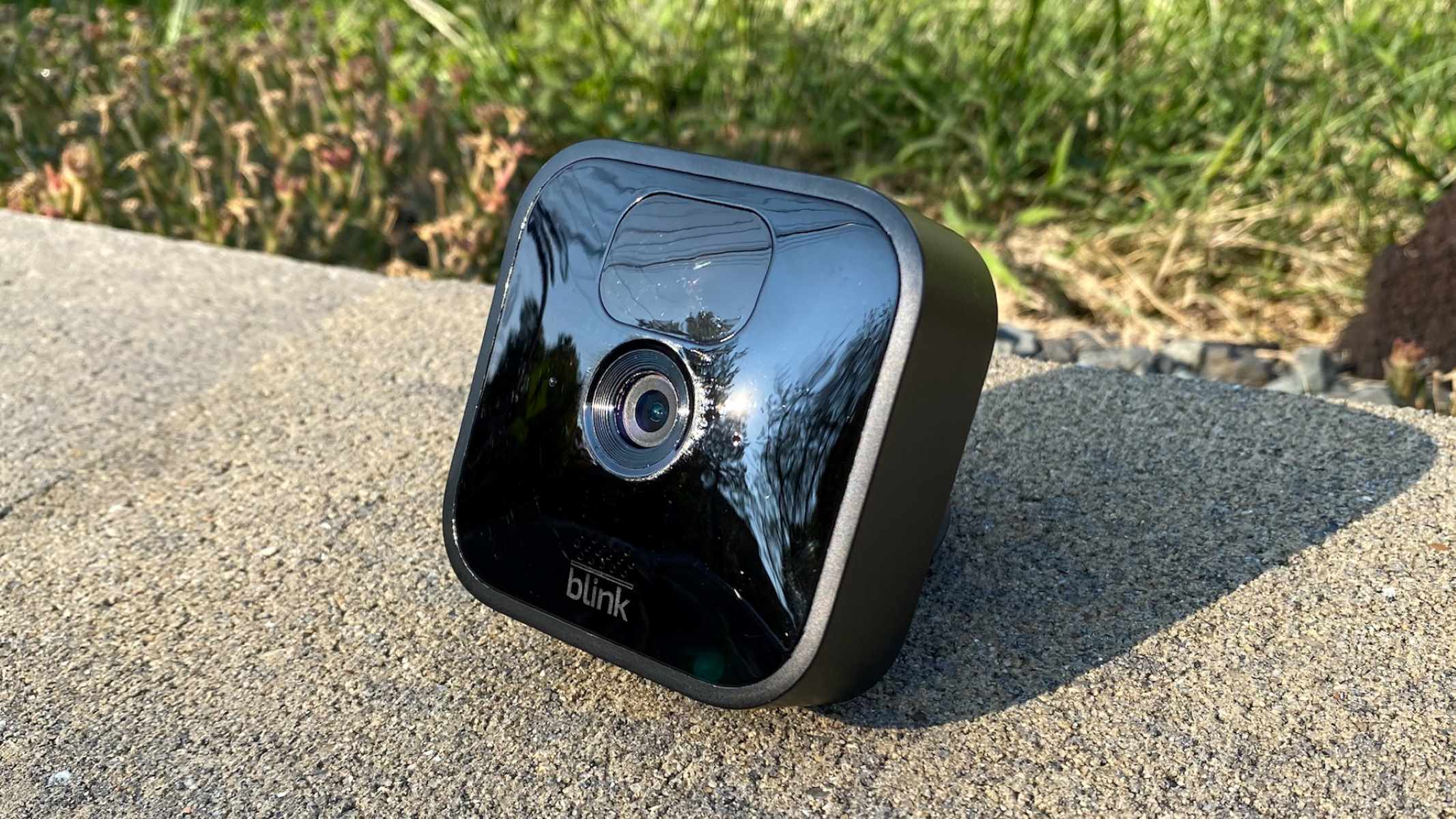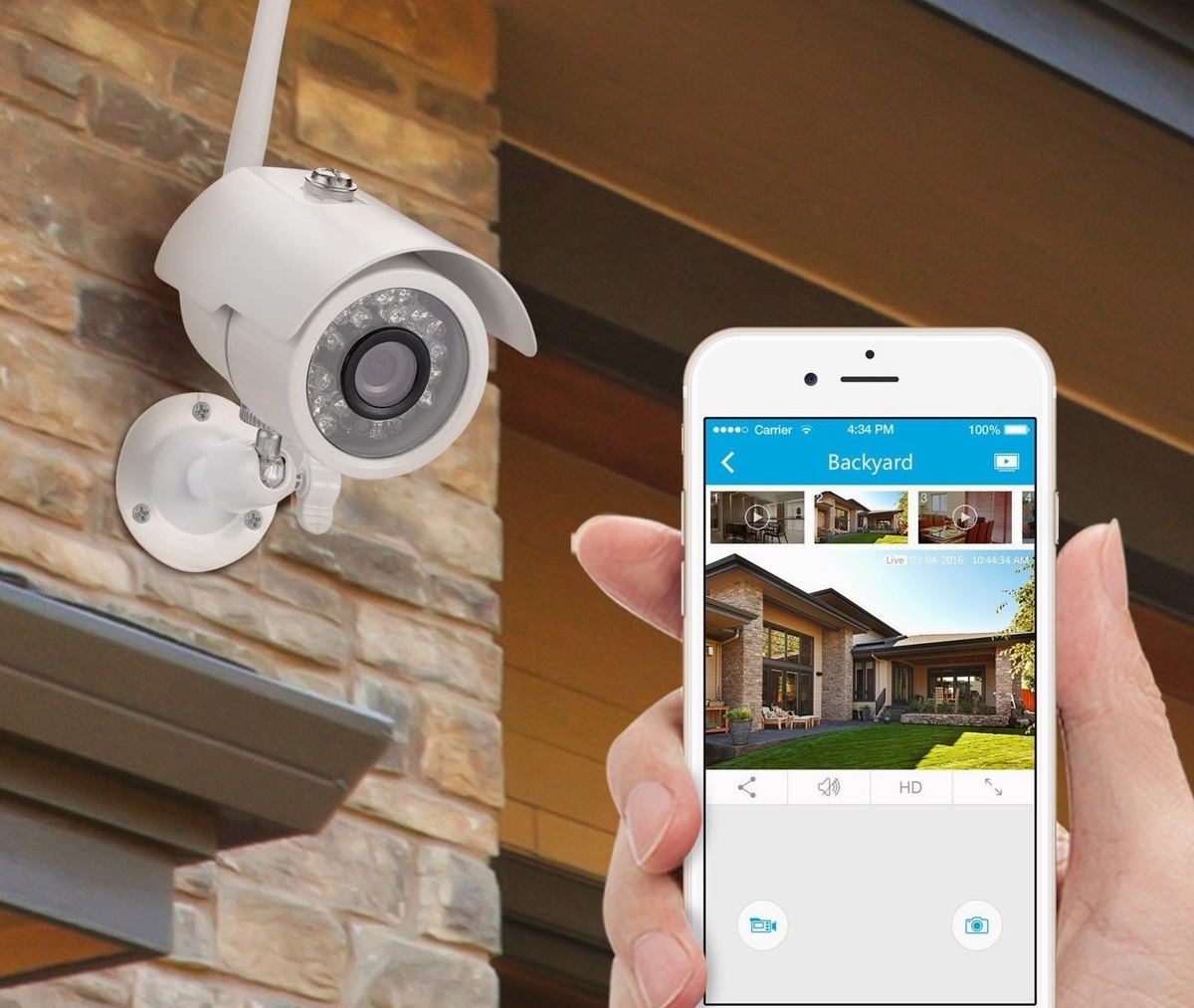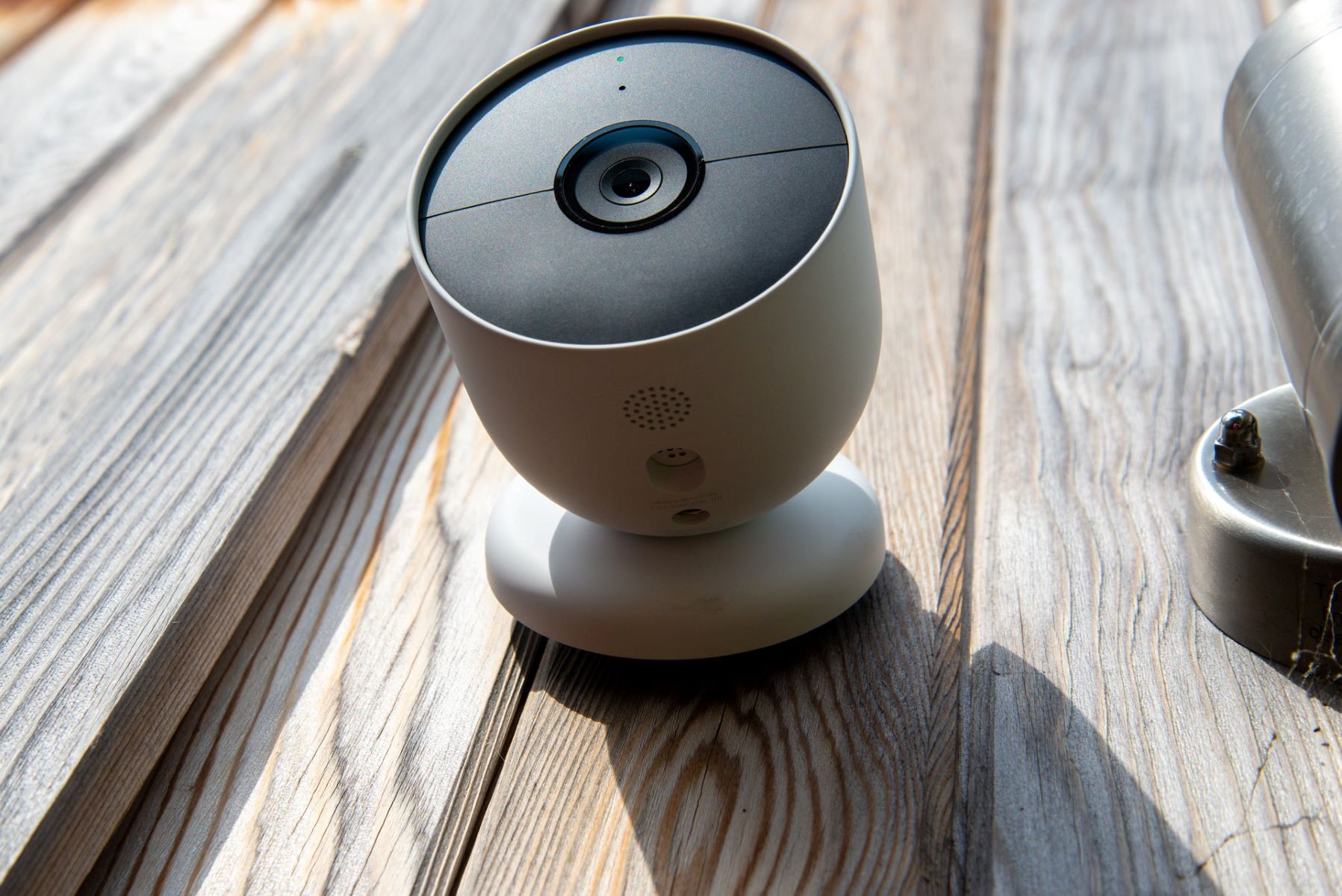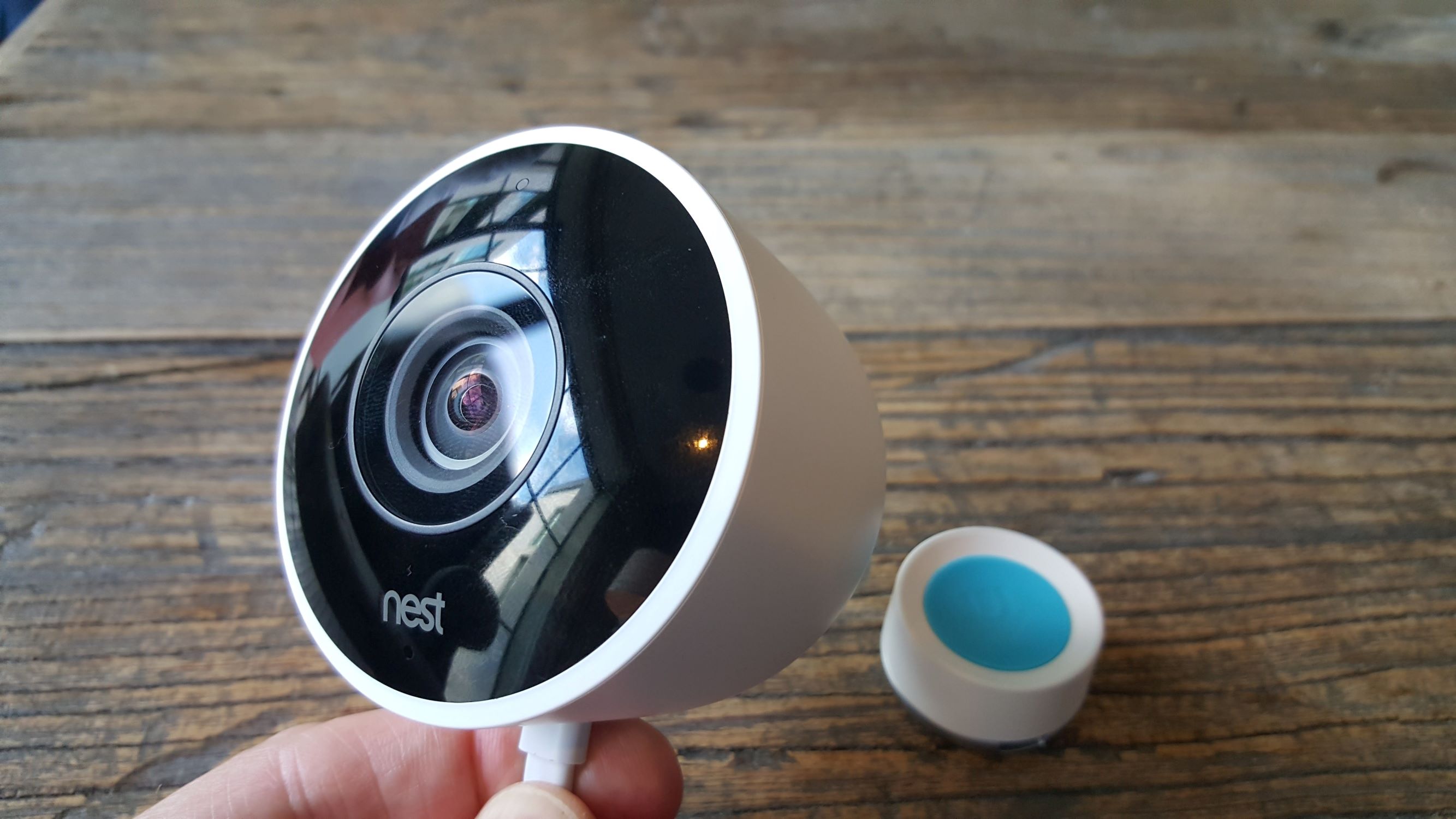Home>Home Security and Surveillance>How Does Wi-Fi Outdoor Camera Work
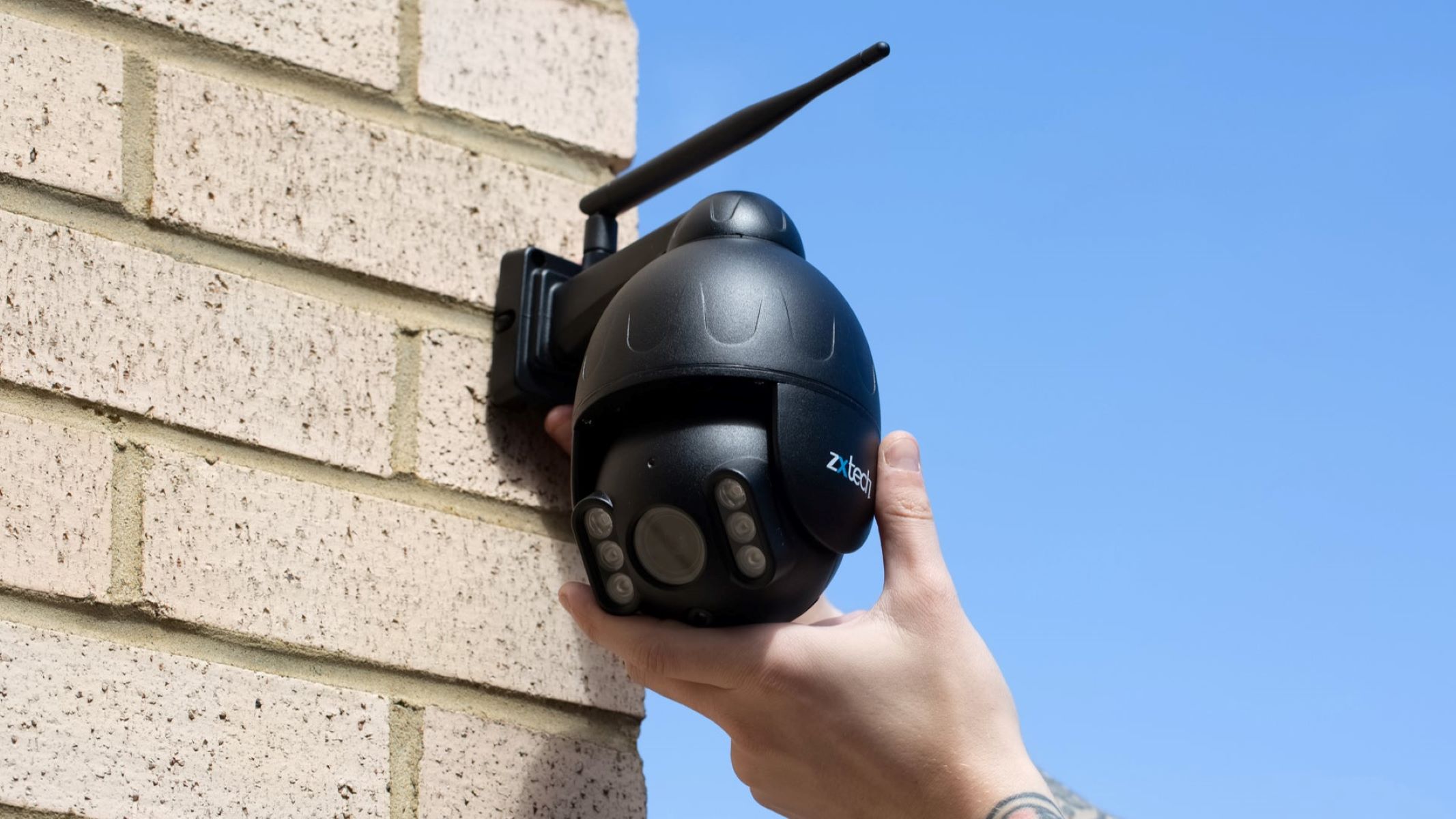

Home Security and Surveillance
How Does Wi-Fi Outdoor Camera Work
Modified: March 6, 2024
Discover how Wi-Fi outdoor cameras work for home security and surveillance. Explore advanced features and benefits of these innovative devices.
(Many of the links in this article redirect to a specific reviewed product. Your purchase of these products through affiliate links helps to generate commission for Storables.com, at no extra cost. Learn more)
Introduction
Welcome to the world of home security and surveillance, where Wi-Fi outdoor cameras play a vital role in keeping our homes secure. In today’s fast-paced and technology-driven world, the need for robust security measures has become increasingly important. Wi-Fi outdoor cameras, also known as wireless outdoor cameras, provide homeowners with an effective solution to monitor their property, deter potential intruders, and keep an eye on their surroundings.
Wi-Fi outdoor cameras are designed to connect to your home network wirelessly, allowing you to access live video feeds and recordings from anywhere in the world through a smartphone, tablet, or computer. These cameras utilize your Wi-Fi network to transmit data, enabling you to monitor your property in real time and receive alerts in case of any suspicious activity.
In this article, we will dive deeper into the workings of Wi-Fi outdoor cameras and explore their various components, connectivity options, features, and benefits. We will also cover important factors to consider when choosing a Wi-Fi outdoor camera and provide troubleshooting tips for common issues that may arise.
But before we delve into the technical aspects, let’s understand why investing in a Wi-Fi outdoor camera is a wise decision for homeowners.
A Wi-Fi outdoor camera serves as an effective deterrent against potential burglars and vandals. Its presence alone can significantly lower the risk of a break-in, as criminals are less likely to target a property that is under surveillance. These cameras provide a constant visual deterrent, creating a sense of security and peace of mind.
Furthermore, Wi-Fi outdoor cameras provide homeowners with remote access and monitoring capabilities. Whether you’re at work, on vacation, or simply away from home, you can easily check in on your property and ensure everything is in order. This flexibility and convenience offer an invaluable level of reassurance for homeowners, allowing them to keep an eye on their home and loved ones at all times.
So, now that we understand the importance of Wi-Fi outdoor cameras, let’s dive into the nitty-gritty details of how they function and what makes them an essential part of modern home security systems.
Key Takeaways:
- Wi-Fi outdoor cameras provide 24/7 surveillance, deter potential intruders, and offer remote access for peace of mind, enhancing home security and safety.
- When choosing a Wi-Fi outdoor camera, consider factors such as resolution, night vision, and power source to ensure optimal surveillance and protection for your home.
How Wi-Fi Outdoor Cameras Function
Wi-Fi outdoor cameras operate by capturing video footage and transmitting it over a wireless network connection. Let’s take a closer look at the key components and processes that enable these cameras to function effectively.
Camera Sensors: Wi-Fi outdoor cameras are equipped with high-resolution sensors that capture video footage in real time. These sensors can range from HD (High Definition) to 4K resolution, providing clear and detailed images of the surveillance area. The quality of the camera sensor directly impacts the clarity and sharpness of the video recordings.
Digital Signal Processor (DSP): The DSP is responsible for processing the raw image data captured by the camera sensor and converting it into a format that can be transmitted over the wireless network. It enhances the image quality, adjusts for lighting conditions, and performs other image processing tasks to ensure optimal visual output.
Video Compression: To minimize the amount of data that needs to be transmitted, Wi-Fi outdoor cameras use video compression techniques. These algorithms reduce the size of the video files without significantly compromising the image quality. Common video compression standards include H.264 and H.265, which can efficiently compress video footage into smaller files while maintaining clarity and detail.
Wi-Fi Connectivity: Wi-Fi outdoor cameras are designed to connect to your home network via Wi-Fi. They utilize the same wireless technology that enables your devices to connect to the internet. The camera communicates with the wireless router in your home, allowing you to access the video footage remotely through a mobile app or web browser.
Network Protocol: Wi-Fi outdoor cameras typically use the Internet Protocol (IP) to transmit data packets over the network. They have an assigned IP address that allows them to communicate with other devices within the network. This IP address is used to identify and locate the camera on the network, facilitating remote access and control.
Mobile App/Web Interface: To access the live video feeds and recorded footage from your Wi-Fi outdoor camera, you can use a dedicated mobile app or web interface provided by the camera manufacturer. These applications allow you to view the camera’s video stream, adjust settings, receive push notifications for motion detection, and more. Through the app or web interface, you can also review past recordings, take snapshots, and even control certain camera functions.
Cloud Storage: Many Wi-Fi outdoor cameras offer cloud storage options for storing recorded video footage. This allows you to securely store and access your recordings remotely, without the need for local storage devices. Cloud storage offers the advantage of easy accessibility from anywhere and ensures that your valuable footage is not lost or damaged.
Power Source: Wi-Fi outdoor cameras can be powered by either an electrical outlet or battery. Cameras that require a power outlet are typically more reliable and provide continuous monitoring without the need for battery replacements. Battery-powered cameras offer more flexibility in terms of placement and don’t rely on a power source, but they will require periodic battery changes or recharging.
In summary, Wi-Fi outdoor cameras leverage advanced technologies such as camera sensors, digital signal processors, video compression, and wireless connectivity to capture, process, and transmit video footage. By utilizing a network connection and a mobile app or web interface, homeowners can remotely access and monitor their Wi-Fi outdoor cameras, providing an added layer of security and peace of mind.
Components of a Wi-Fi Outdoor Camera
A Wi-Fi outdoor camera is composed of several key components that work together to capture and transmit video footage. Understanding these components will help you make an informed decision when choosing a Wi-Fi outdoor camera for your home security needs. Let’s explore the main components of a Wi-Fi outdoor camera:
Camera Lens: The camera lens is a critical component that determines the field of view and image quality of the camera. It focuses the incoming light onto the camera sensor, allowing for the capture of clear and detailed images. The lens may have a fixed or variable focal length, which determines the viewing angle and the ability to zoom in or out.
Camera Sensor: The camera sensor is responsible for converting the light captured by the lens into an electrical signal. It is the heart of the camera and plays a crucial role in determining the resolution and image quality. Common sensor types include CMOS (Complementary Metal-Oxide-Semiconductor) and CCD (Charge-Coupled Device), with CMOS sensors being more commonly used due to their lower power consumption and better noise handling capabilities.
Infrared (IR) LEDs: Many Wi-Fi outdoor cameras are equipped with infrared LEDs, which emit infrared light that is invisible to the human eye. These LEDs enable the camera to capture clear video footage even in low-light or no-light conditions. The camera’s IR LEDs illuminate the area within its range, allowing for surveillance and monitoring even in complete darkness.
Image Processor: The image processor is responsible for enhancing and optimizing the captured images. It processes the raw data from the camera sensor, applying algorithms to adjust brightness, contrast, and color balance. The image processor also handles features such as digital zoom, image stabilization, and noise reduction to deliver clear and accurate video captures.
Enclosure: The enclosure of a Wi-Fi outdoor camera is designed to protect the internal components from various weather conditions. It should be durable, weatherproof, and resistant to dust, moisture, and temperature extremes. The enclosure may be made of materials such as plastic, metal, or a combination of both.
Mounting Bracket: The mounting bracket allows for secure installation and positioning of the camera. It can be adjustable to provide the desired angle and direction for optimal coverage of the surveillance area. Some Wi-Fi outdoor cameras come with a built-in mounting bracket, while others may require a separate bracket for installation.
Microphone/Speaker: Many Wi-Fi outdoor cameras are equipped with a built-in microphone and speaker, enabling two-way audio communication. This feature allows you to listen to audio from the surveillance area and even speak to individuals near the camera. It can be useful for scenarios such as monitoring deliveries, communicating with visitors, or deterring potential intruders.
Storage: Wi-Fi outdoor cameras utilize various storage options for recording and storing video footage. This can include onboard storage in the form of a microSD card slot, or cloud storage services provided by the camera manufacturer. Some cameras may offer both options, allowing you to choose the preferred storage method based on your needs and preferences.
Power Source: Wi-Fi outdoor cameras require a power source to operate. They can be powered by either an electrical outlet or battery. Electrical outlet-powered cameras provide continuous monitoring without the need to worry about battery life, while battery-powered cameras offer flexibility in terms of placement and can function even during power outages.
Wi-Fi Antenna: The Wi-Fi antenna enables the camera to wirelessly connect to your home network. It receives and transmits Wi-Fi signals, ensuring a stable and reliable connection to your router. The placement and quality of the Wi-Fi antenna can impact the camera’s connectivity range and signal strength.
Understanding the various components of a Wi-Fi outdoor camera will assist you in making an informed decision when selecting the right camera for your home security needs. Each component plays a crucial role in capturing, processing, and transmitting video footage, ensuring that you have a reliable and effective surveillance system to protect your home.
Connecting a Wi-Fi Outdoor Camera to a Network
Setting up and connecting a Wi-Fi outdoor camera to your home network is a straightforward process. Although the exact steps may vary depending on the camera model and manufacturer, the general process involves the following key steps:
- Choose the Camera Location: Before connecting the camera to your network, carefully choose the ideal location for your Wi-Fi outdoor camera. Consider factors such as the area you want to monitor, the camera’s field of view, and potential obstructions. Ensure that the camera is placed within the range of your Wi-Fi network signal.
- Power On the Camera: Once you have selected the camera’s location, power it on using either an electrical outlet or a battery, depending on the camera’s power source. Make sure the camera is receiving power and that the LED indicator lights are activated.
- Connect to the Camera: Using a smartphone, tablet, or computer, connect to the Wi-Fi network that the camera is broadcasting. Typically, the camera will have its own Wi-Fi network that you can connect to during the setup process. This network is often labeled on the camera or mentioned in the camera’s user manual.
- Launch the Camera’s Mobile App or Web Interface: Once connected to the camera’s Wi-Fi network, open the dedicated mobile app or web interface provided by the camera manufacturer. This app or interface allows you to access and control the camera’s settings.
- Scan the QR Code or Enter Camera Details: In the camera’s mobile app or web interface, you will likely have the option to scan a QR code that is displayed on the camera or enter the camera’s serial number or unique identifier manually. This step is crucial for identifying the camera and linking it to your account.
- Connect the Camera to Your Home Wi-Fi Network: Once the camera is recognized by the app or web interface, it will prompt you to connect the camera to your home Wi-Fi network. Select your network from the available options and enter the correct network password when prompted. The camera will then establish a secure connection to your Wi-Fi network.
- Configure Camera Settings: After successfully connecting the camera to your home network, you can customize its settings according to your preferences. This may include adjusting video resolution, enabling motion detection, setting up alerts, and configuring storage options. Refer to the camera’s user manual or online documentation for detailed instructions on the available settings.
- Finalize the Setup: Once you have configured the camera settings, you can finalize the setup by saving the changes and exiting the app or web interface. The camera will now be connected to your home network and ready to monitor your property.
It’s important to note that some Wi-Fi outdoor cameras may require additional steps or the use of a companion hub or base station for connectivity. Always refer to the camera’s user manual and follow the specific instructions provided by the manufacturer for the most accurate setup process.
By following these steps, you can easily connect your Wi-Fi outdoor camera to your home network and gain remote access to live video feeds and recordings. This enables you to monitor your property, receive alerts, and ensure the security of your home from anywhere in the world.
Power Source Options for Wi-Fi Outdoor Cameras
Wi-Fi outdoor cameras require a reliable power source to operate and provide continuous surveillance of your property. Depending on your specific needs and preferences, there are several power source options available for these cameras. Let’s explore some of the most common power source options for Wi-Fi outdoor cameras:
- Electrical Outlet: Many Wi-Fi outdoor cameras are designed to be powered by a standard electrical outlet. These cameras typically come with a power adapter that needs to be plugged into an outlet near the camera’s installation location. This eliminates the need for frequent battery replacements or recharging, ensuring uninterrupted monitoring and recording.
- Battery-powered: Battery-powered Wi-Fi outdoor cameras offer greater flexibility in terms of camera placement, as they don’t require a nearby electrical outlet. These cameras are equipped with rechargeable batteries that provide power for an extended period. However, it’s important to consider the battery life and the need to periodically recharge or replace the batteries to ensure uninterrupted operation.
- Solar-Powered: Solar-powered Wi-Fi outdoor cameras harness the power of the sun to charge their built-in batteries. These cameras feature solar panels that capture sunlight and convert it into electrical energy, which is stored in the batteries. Solar-powered cameras are an eco-friendly option and ideal for locations with ample sunlight. They offer the advantage of a self-sustaining power source, reducing the need for manual recharging or battery replacements.
- Power over Ethernet (PoE): Power over Ethernet is a technology that allows both data and power to be transmitted through a single Ethernet cable. PoE Wi-Fi outdoor cameras can be powered using a PoE injector or a PoE switch, which eliminates the need for a separate power adapter. This option is commonly used for professional-grade surveillance systems and requires a PoE-enabled network switch or injector.
- Rechargeable Battery Pack: Some Wi-Fi outdoor cameras may offer the option to use a rechargeable battery pack as an alternative to standard batteries. These battery packs can be easily swapped out and recharged, ensuring extended power supply without the need for a nearby electrical outlet.
- Hardwired: Hardwired Wi-Fi outdoor cameras are directly connected to a power source through electrical wiring. This option provides a constant and reliable power supply while eliminating the need for batteries or recharging. Hardwired cameras may require professional installation due to the electrical wiring involved.
When choosing the power source for your Wi-Fi outdoor camera, it’s essential to consider factors such as convenience, reliability, and the availability of power outlets in the desired camera installation location. Additionally, battery-powered or solar-powered options are more suitable for areas where accessing a power outlet may be challenging or costly.
Before making a decision, it’s also crucial to review the camera’s specifications, including the estimated battery life for battery-powered cameras, the charging time for solar-powered cameras, or the compatibility with PoE technology for PoE cameras. This information will help you select a power source option that best suits your specific requirements.
Ultimately, the chosen power source option for your Wi-Fi outdoor camera will play a vital role in ensuring continuous surveillance, allowing you to monitor and protect your property effectively.
Read more: How Does A Wi-Fi Router Work
Wireless Connectivity of Wi-Fi Outdoor Cameras
Wi-Fi outdoor cameras rely on wireless connectivity to transmit data and provide remote access to live video feeds and recordings. Understanding the wireless connectivity options and considerations will help ensure stable and reliable connections for your Wi-Fi outdoor camera. Let’s explore the wireless connectivity aspects of these cameras:
Wi-Fi Standards: Wi-Fi outdoor cameras typically adhere to industry-standard wireless protocols defined by the Institute of Electrical and Electronics Engineers (IEEE). The most common Wi-Fi standards for these cameras are IEEE 802.11b/g/n/ac. It’s important to note that the camera and your home network should be compatible with the same Wi-Fi standard to establish a connection.
Frequency Bands: Wi-Fi operates on two primary frequency bands: 2.4 GHz and 5 GHz. The 2.4 GHz band offers a longer range but may experience more interference from other devices, such as cordless phones and microwaves. The 5 GHz band provides faster speeds but has a shorter range. When setting up a Wi-Fi outdoor camera, it’s recommended to use the 2.4 GHz band for better coverage and stability over longer distances.
Wireless Range: The wireless range is an essential consideration when setting up a Wi-Fi outdoor camera. The range refers to the maximum distance at which the camera can maintain a stable connection with the wireless router. Factors such as obstructions (e.g., walls, trees) and the quality of the camera’s Wi-Fi antenna can affect the range. It’s important to place the camera within the range of your Wi-Fi network for optimal performance.
Signal Strength and Interference: The signal strength of a Wi-Fi connection significantly affects the stability and reliability of the camera’s wireless connectivity. A strong signal ensures a stable connection and minimizes the risk of dropouts or interruptions in the video feed. Interference from other electronic devices or neighboring Wi-Fi networks can weaken the signal. To mitigate interference, ensure that the camera is placed away from potential sources of interference and consider using Wi-Fi extenders or mesh networks to boost signal strength.
Security Protocols: To protect your Wi-Fi outdoor camera and the data transmitted over the network, it’s crucial to enable robust security protocols. Common security protocols for Wi-Fi networks include Wi-Fi Protected Access (WPA2) and its variants. These protocols provide encryption and authentication mechanisms to safeguard the privacy and integrity of the camera’s data.
Network Bandwidth: Streaming live video from your Wi-Fi outdoor camera consumes network bandwidth. It’s important to consider the available bandwidth on your home network, particularly if you have multiple devices connected simultaneously or engage in data-intensive activities. Uploading high-resolution video footage, especially when using cloud storage, may require a higher bandwidth allocation to ensure optimal performance.
Network Placement: The placement of your wireless router can impact the signal strength and coverage of your Wi-Fi outdoor camera. It’s recommended to position the router in a central location within your home to maximize coverage. If the camera is located far from the router, consider using Wi-Fi range extenders to boost the signal or utilizing a mesh network system for wider coverage.
By considering these aspects of wireless connectivity, you can ensure stable and reliable connections for your Wi-Fi outdoor camera. A strong and secure wireless connection enables seamless access to live video feeds, notifications, and remote control of your camera, offering the peace of mind and security you desire for your home.
When setting up a Wi-Fi outdoor camera, make sure it is within range of your Wi-Fi network and has a clear line of sight. This will ensure a strong and reliable connection for the camera to transmit footage to your device.
Features and Capabilities of Wi-Fi Outdoor Cameras
Wi-Fi outdoor cameras come equipped with a wide range of features and capabilities that enhance their functionality and provide advanced surveillance capabilities. Understanding these features will help you choose the right Wi-Fi outdoor camera to meet your specific security needs. Let’s explore some of the key features and capabilities of these cameras:
High-Resolution Video: Wi-Fi outdoor cameras offer high-resolution video capabilities, ranging from HD (High Definition) to 4K Ultra HD. Higher resolutions result in clearer and more detailed video footage, allowing for better identification of people, objects, and events. When considering a camera, opt for the highest resolution that fits your budget and requirements.
Night Vision: Many Wi-Fi outdoor cameras are equipped with infrared (IR) LEDs that provide night vision capabilities. These cameras can capture clear video footage even in low-light or complete darkness. Night vision allows for round-the-clock surveillance, ensuring your property remains protected regardless of the lighting conditions.
Motion Detection: Motion detection is a common feature in Wi-Fi outdoor cameras. These cameras use built-in sensors to detect movement within their field of view. When motion is detected, the camera can send real-time alerts to your smartphone or other devices, allowing you to quickly respond and investigate potential security breaches.
Two-Way Audio: Many Wi-Fi outdoor cameras are equipped with built-in microphones and speakers, enabling two-way audio communication. This feature allows you to listen to audio from the surveillance area and speak through the camera, providing a convenient way to communicate with visitors, delivery persons, or potential intruders.
Mobile App and Remote Access: Wi-Fi outdoor cameras typically come with a dedicated mobile app or web interface that allows you to remotely access and control the camera from anywhere in the world. Through the app or interface, you can view live video feeds, review recordings, adjust camera settings, receive alerts, and more. This remote access feature ensures you have real-time visibility and control over your property at all times.
Cloud Storage and Local Storage: Many Wi-Fi outdoor cameras offer both cloud and local storage options for storing recorded video footage. Cloud storage provides convenient and secure remote access to your recordings, while local storage via a microSD card allows for on-site access without relying on an internet connection. Choose the storage option that best fits your needs in terms of accessibility, storage capacity, and data security.
Intelligent Video Analytics: Advanced Wi-Fi outdoor cameras may offer intelligent video analytics capabilities. These features involve algorithms that can detect specific objects, identify people or vehicles, and provide advanced motion tracking. Intelligent video analytics enhance the accuracy and effectiveness of your camera’s motion detection and alerting capabilities, reducing false alarms and delivering more relevant notifications.
Weather Resistance: Wi-Fi outdoor cameras are designed to withstand various weather conditions. Look for cameras with an IP (Ingress Protection) rating, which indicates their resistance to dust and water. The higher the IP rating, the more durable and weatherproof the camera will be.
Pan, Tilt, and Zoom (PTZ) Functionality: Some Wi-Fi outdoor cameras offer PTZ functionality, allowing for remote control of the camera’s movement. This feature enables you to pan horizontally, tilt vertically, and zoom in on specific areas of interest. PTZ functionality provides enhanced flexibility and coverage of your surveillance area.
Integration with Smart Home Platforms: Wi-Fi outdoor cameras may offer integration with popular smart home platforms and voice assistants such as Amazon Alexa or Google Assistant. This allows you to control and access your camera through voice commands or integrate it into a broader smart home ecosystem for seamless automation and convenience.
These are just a few of the many features and capabilities that Wi-Fi outdoor cameras can offer. When choosing a camera, consider which features are essential for your specific security needs and prioritize them accordingly. By selecting a camera with the right combination of features and capabilities, you can build a robust and effective home surveillance system that meets your requirements.
Benefits of Using Wi-Fi Outdoor Cameras
Wi-Fi outdoor cameras provide homeowners with a wide range of benefits, offering enhanced security, convenience, and peace of mind. These cameras play a crucial role in protecting your property and loved ones. Let’s delve into some of the key benefits of using Wi-Fi outdoor cameras:
24/7 Surveillance: Wi-Fi outdoor cameras offer round-the-clock surveillance of your property. They have the ability to capture high-resolution video footage day and night, ensuring that your property is protected at all times. With features like night vision and motion detection, these cameras provide constant monitoring and enable you to quickly respond to any suspicious activity.
Remote Access and Monitoring: One of the significant advantages of Wi-Fi outdoor cameras is the ability to access and monitor your property remotely from anywhere in the world. Through a dedicated mobile app or web interface, you can view live video feeds, review recordings, adjust camera settings, and receive real-time alerts. This remote access feature allows you to stay connected and informed, providing peace of mind even when you’re away from home.
Deterrence: The mere presence of Wi-Fi outdoor cameras acts as a powerful deterrent to potential intruders and vandals. Criminals are less likely to target a property when they know it is under surveillance. The visible presence of these cameras sends a clear message that your home is protected and monitored, significantly reducing the risk of break-ins and property damage.
Evidence Collection: In the unfortunate event of a burglary or vandalism, Wi-Fi outdoor cameras play a crucial role in collecting valuable evidence. The recorded video footage can be used by law enforcement agencies to identify and apprehend criminals. This evidence can also be helpful for insurance claims and providing peace of mind during unfortunate incidents.
Real-Time Alerts and Notifications: Wi-Fi outdoor cameras with motion detection capabilities can send real-time alerts and notifications to your smartphone or other connected devices. This immediate notification allows you to take swift action if there is any detected movement or suspicious activity around your property. This feature is especially useful when you’re not at home and need to be alerted to potential security breaches.
Enhanced Safety: Wi-Fi outdoor cameras not only secure your property but also contribute to the safety of your family and visitors. With the ability to communicate through built-in microphones and speakers, you can greet and engage with visitors or delivery personnel remotely. This feature enhances safety by allowing you to monitor and control access to your property without physically being present.
Convenience and Flexibility: Wi-Fi outdoor cameras offer convenient and flexible installation options. They can be mounted in various locations around your property, providing coverage where it is needed the most. With wireless connectivity, you can easily connect and manage multiple cameras through a single mobile app or web interface. This flexibility allows you to tailor the surveillance system to your specific needs.
Integration with Smart Home Systems: Some Wi-Fi outdoor cameras are compatible with popular smart home platforms and voice assistants. This integration allows you to control and access your camera through voice commands or incorporate it into a broader smart home ecosystem. You can create automation routines, such as turning on the outdoor lights when motion is detected, further enhancing the security and convenience of your home.
Savings on Insurance Premiums: Installing Wi-Fi outdoor cameras can potentially lead to savings on your home insurance premiums. Insurance companies often offer discounts for homes equipped with security systems. By providing video evidence and reducing the risk of burglary or property damage, your insurance provider may consider your property to be a lower risk, resulting in reduced insurance costs.
Wi-Fi outdoor cameras offer numerous benefits that enhance the security, convenience, and overall well-being of homeowners. From continuous surveillance and remote access to deterrence and evidence collection, these cameras provide peace of mind and help create a secure environment for your home and loved ones.
Factors to Consider When Choosing a Wi-Fi Outdoor Camera
When selecting a Wi-Fi outdoor camera for your home security needs, it’s essential to consider various factors to ensure that you choose the right camera that meets your requirements. Here are some key factors to consider when making your decision:
Camera Resolution: The camera resolution determines the clarity and detail of the captured video footage. Higher resolutions, such as HD (High Definition) or 4K Ultra HD, offer sharper images and better visibility. Consider the level of detail you require for your surveillance needs and choose a camera with an appropriate resolution.
Field of View: The camera’s field of view (FOV) refers to the area that the camera can capture. A wide-angle FOV ensures greater coverage of your surveillance area. Consider the size and layout of the area you want to monitor and choose a camera with a suitable FOV to ensure optimal coverage.
Night Vision: If you require 24/7 monitoring, consider a camera with night vision capabilities. Look for cameras with infrared (IR) LEDs that provide clear visibility in low-light or no-light conditions. The range of the night vision feature can vary, so ensure that it suits your specific needs.
Motion Detection and Alerts: Motion detection capability allows the camera to detect movement within its field of view. Look for cameras with customizable motion detection settings and the ability to send real-time alerts to your smartphone or other devices. Adjustable sensitivity levels and customizable motion zones help reduce false alarms and ensure accurate detection.
Video Storage: Consider how you want to store and access your video footage. Wi-Fi outdoor cameras typically offer options for local storage via a microSD card slot or cloud storage provided by the camera manufacturer. Evaluate the storage capacity, cost, and accessibility of the storage options to suit your needs.
Remote Access: Look for cameras that provide remote access capabilities, allowing you to view live video feeds and manage settings from anywhere using a mobile app or web interface. Ensure that the camera’s companion app is user-friendly and compatible with your mobile devices.
Weather Resistance: Wi-Fi outdoor cameras are exposed to various weather conditions. Look for cameras with a high IP (Ingress Protection) rating to ensure they are weatherproof and can withstand dust, rain, snow, and extreme temperatures. This ensures the durability and long-term functionality of the camera in outdoor environments.
Power Source: Consider the available power source options for the camera. Choices include electrical outlet, battery-powered, solar-powered, or PoE (Power over Ethernet). Each option has its advantages and limitations, so choose the one that fits your installation requirements and provides reliable power supply for the camera.
Integration with Other Devices: If you have an existing smart home setup or plan to integrate the camera into a broader smart home ecosystem, check if the camera is compatible with popular smart home platforms and voice assistants. This compatibility allows for seamless automation and control of the camera alongside other smart devices.
Budget: Set a budget for your Wi-Fi outdoor camera purchase. Camera prices can vary based on features, brand, and resolution. Consider the features that are essential for your needs, as well as maintenance and subscription costs associated with cloud storage or additional services.
By carefully considering these factors, you can choose a Wi-Fi outdoor camera that aligns with your specific requirements and provides optimal security for your home. Take your time to research different options, read product reviews, and evaluate the features that are most important to you to make an informed decision.
Read more: How To Change Wi-Fi On Blink Outdoor Camera
Common Issues and Troubleshooting Tips
While Wi-Fi outdoor cameras are designed to provide reliable and seamless surveillance, occasional issues may arise. Understanding common problems and having troubleshooting knowledge can help you address and resolve these issues effectively. Here are some common issues and troubleshooting tips:
Wi-Fi Connection Issues: If you are experiencing connectivity problems with your Wi-Fi outdoor camera, check the following:
– Ensure that the camera is within the range of your Wi-Fi network signal.
– Verify that your Wi-Fi router is functioning properly and that other devices can connect to it.
– Check for any interference from other electronic devices that may be affecting the Wi-Fi signal strength.
– If the camera’s wireless connection is unstable, consider using Wi-Fi range extenders to improve the signal or upgrading your router for better coverage and performance.
Video Quality Issues: If you are encountering issues with the video quality of your Wi-Fi outdoor camera, consider the following:
– Check the camera lens for any potential obstructions or debris that may affect the image quality.
– Adjust the camera’s focus and position to ensure it is capturing the desired area with optimal clarity.
– If the video appears blurry, adjust the camera’s resolution settings to a higher level.
– Ensure that there is sufficient lighting for the camera’s night vision to function correctly. Additional lighting may be required in low-light conditions.
Motion Detection Problems: If the motion detection feature of your Wi-Fi outdoor camera is not working as expected, try the following:
– Make sure that the camera’s motion detection settings are properly configured and adjusted to the desired sensitivity level.
– Check for any obstructions or objects that may be triggering false motion detection alerts.
– Verify that the camera has a clear line of sight to the area you want to monitor, as objects or environmental conditions may interfere with accurate motion detection.
Power Issues: If you are encountering power-related problems with your Wi-Fi outdoor camera, consider the following:
– For electrical outlet-powered cameras, ensure that the power source is functioning correctly and that the camera is securely connected. Try using a different power outlet if necessary.
– If you are using battery-powered or solar-powered cameras, check the battery level or solar panel positioning to ensure adequate power supply.
– In the case of battery-powered cameras, ensure that the batteries are correctly installed and fully charged. Consider keeping spare batteries on hand for easy replacement.
App or Interface Troubles: If you are experiencing issues with the camera’s mobile app or web interface, consider the following:
– Ensure that you have the latest version of the app installed on your mobile device or that your web browser is up to date.
– Check your internet connection to ensure that it is stable and that you have sufficient bandwidth to support video streaming and app functionality.
– If you are encountering login or account-related issues, verify that your username and password are correct and that you have a stable internet connection.
Resetting and Reconnecting: If you are still experiencing issues with your Wi-Fi outdoor camera, you can try the following troubleshooting steps:
– Reset the camera by following the manufacturer’s instructions. This typically involves pressing a reset button or using a pin to hold down the reset button for a specific duration.
– Reconnect the camera to your Wi-Fi network, ensuring that you input the correct network name (SSID) and password during the setup process.
– Consider reinstalling the camera’s mobile app or clearing the cache of your web browser to resolve any software-related issues.
If you have attempted these troubleshooting steps and still cannot resolve the issue, it is recommended to refer to the camera’s user manual or contact the manufacturer’s customer support for further assistance. They can provide specific guidance based on your camera’s model and offer further troubleshooting steps or potential solutions.
By being aware of common issues and having troubleshooting knowledge, you can address and resolve potential problems with your Wi-Fi outdoor camera effectively, ensuring consistent and reliable performance in maintaining the security of your property.
Conclusion
Wi-Fi outdoor cameras are an essential component of modern home security systems, providing homeowners with a reliable and effective surveillance solution. These cameras offer a range of features and capabilities that enhance the security, convenience, and peace of mind for homeowners.
By connecting to your home network via Wi-Fi, these cameras enable remote access and monitoring from anywhere in the world. Through dedicated mobile apps or web interfaces, you can view live video feeds, review recordings, adjust settings, and receive real-time alerts. This remote access allows you to stay connected and informed about the security of your home, even when you’re away.
Some of the key benefits of using Wi-Fi outdoor cameras include 24/7 surveillance, deterrence of potential intruders, collection of valuable evidence, and enhanced safety for your family and visitors. These cameras offer convenience and flexibility in terms of installation options and integration with smart home ecosystems, providing seamless automation and control.
When choosing a Wi-Fi outdoor camera, consider factors such as camera resolution, field of view, night vision capability, and the availability of local or cloud storage. Factor in your budget, desired power source, and the compatibility of the camera with your existing home network and devices.
In the event of common issues or troubleshooting needs, understanding Wi-Fi connectivity, video quality, motion detection, power, and app-related considerations will help you address and resolve any problems effectively. Ultimately, reading the camera’s user manual and reaching out to the manufacturer’s customer support can provide further guidance and assistance.
In conclusion, Wi-Fi outdoor cameras offer homeowners a valuable tool in enhancing the security and surveillance of their properties. With their advanced features, remote access capabilities, and ease of use, these cameras provide peace of mind and a reliable defense against potential security breaches. Invest in a Wi-Fi outdoor camera today and take control of the security of your home.
Frequently Asked Questions about How Does Wi-Fi Outdoor Camera Work
Was this page helpful?
At Storables.com, we guarantee accurate and reliable information. Our content, validated by Expert Board Contributors, is crafted following stringent Editorial Policies. We're committed to providing you with well-researched, expert-backed insights for all your informational needs.
